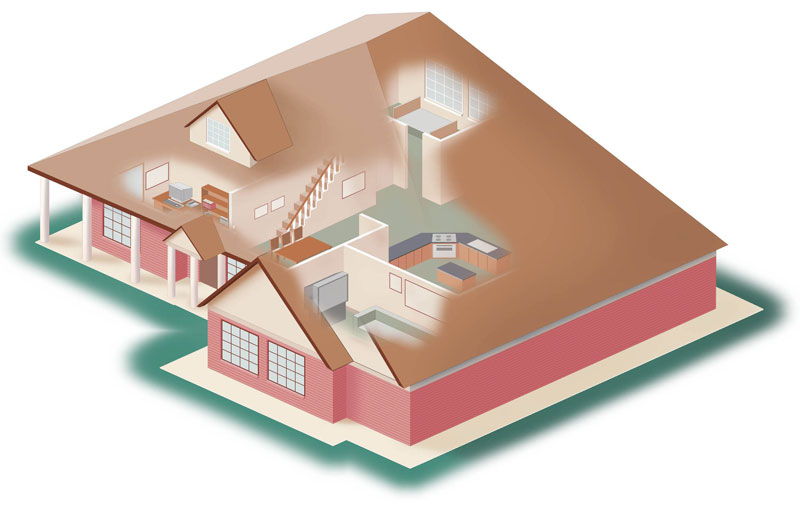
Color is no longer the first association with the word green. It is now about reducing, reusing and recycling, not just trash, but in every facet of living.
Today, greening, or sustainability, marries with every industry and area of study, including interior design. Some CSUN teachers regularly incorporate this into their classroom curriculum but one student thinks it may not be enough.
Jean Tumbaga, a senior interior design major, feels the department as a whole does not share her passion for sustainability. She said only a few of her professors make sustainability a focus in their curriculum.
“Green words are only thrown in once in a while,” Tumbaga said of some of her design classes. “If the interior design department would just take a moment or a class to go over the key words, planting the seeds early so that by the time (students) are seniors it’s embedded in their head.”
Dr. Kyriakos Pontikis, is an interior design professor and member of the CSUN Green Core Team and Sustainability Curriculum Committee, which works towards greening campus curriculum. Pontikis has a thorough approach to sustainability in the classroom.
Pontikis said green design primarily focuses on materials, technology, engineering and production. He added that there is also humane design where “human wholeness and spirit of place support and enhance the environment.”
In the spirit of reducing, Pontikis combines these tracks into a single approach.
“I personally came to coin a new term which is the ‘humane green,’” Pontikis said. “In order for a more holistic sustainable development to take place, both of these design tracks, the green one and the humane one, need to be integrated.”
Pontikis said students have the opportunity to practice humane greening technique and cumulative knowledge from lower level classes when they participate in a senior-level class he teaches called the “the sustainability studio.” In this class, students design a 12,000 to 15,000 square foot sustainable project.
Despite Pontikis’ thorough greening approach, Tumbaga’s classroom experience has not been that comprehensive and thinks students are missing much needed experience.
“If we want to be progressive, innovative, in the know and be really good at design, I think professors should be on the same page,” Tumbaga said. “They should be aware and require us to use green design.”
Tumbaga is dedicated to her major; she obtained her LEED certification last year. LEED stands for Leadership in Energy and Environmental Design. According to the U.S. Green Building Council, the LEED rating system applies to both commercial and residential structures.
“I’m just really big on green,” Tumbaga said.
Dr. Victoria Brinn-Feinberg, an interior design professor, said CSUN’s department is comparable to other colleges.
“I think that we’re right up there on top because we are accredited. We’re coming up for re-accreditation in the fall,” Brinn-Feinberg said.
Pontikis feels there is room for improvement.
“Still, a lot needs to be done in the interior design program,” he said.
He is trying to make change happen. Pontikis and his colleagues are working on setting up an interior design laboratory where students can build three-dimensional models out of sustainable or recyclable materials.
“I would hope and wish they would all be on the same page,” Tumbaga said of her teachers. “So that as (students) progress into the green design, so that by the time we’re seniors, we would be more successful and knowledgeable in the real world experience,” she said.




